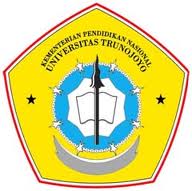Anda belum Log-in!
Silahkan Log in
Selamat Datang di Portal Digital Content Publisher
Minggu , 09 November 2025
Perpustakaan sebagai jantung pendidikan tinggi di Indonesia, harus mampu memberi kontribusi yang berarti bagi pelaksanaan proses belajar mengajar di perguruan tinggi.
di-posting oleh 210441100077 pada 2025-07-07 06:07:25 • 85 klik
KLASIFIKASI MULTI-LABEL JURNAL SCOPUS MENGGUNAKAN METODE BIDIRECTIONAL LONG SHORT-TERM MEMORY (BILSTM)
MULTI-LABEL CLASSIFICATION OF SCOPUS JOURNALS USING THE BIDIRECTIONAL LONG SHORT-TERM MEMORY (BILSTM)
disusun oleh NUR RIZKINA
| Subyek: | JURNAL ILMIAH--KLASIFIKASI--ILMU KOMPUTER PEMBELAJARAN MENDALAM (DEEP LEARNING) PEMROSESAN BAHASA ALAMI (NLP) |
| Kata Kunci: | Klasifikasi Teks BiLSTM Rule-Based Word2vec Scopus |
[ Anotasi Abstrak ]
Pertumbuhan jumlah jurnal ilmiah yang terindeks Scopus terus mengalami peningkatan signifikan, khususnya di bidang ilmu komputer. Kondisi ini menimbulkan tantangan dalam mengklasifikasikan fokus keilmuan jurnal secara otomatis dan efisien. Penelitian ini bertujuan untuk mengembangkan model klasifikasi multi-label jurnal Scopus berdasarkan teks Focus and Scope menggunakan metode Bidirectional Long Short-Term Memory (BiLSTM). Sebelum proses pelatihan model, dilakukan pelabelan awal secara otomatis menggunakan pendekatan rule-based dengan memanfaatkan kata kunci dari 11 kategori bidang ilmu komputer. Selanjutnya, data melalui tahapan preprocessing meliputi cleaning, case folding, tokenization, dan stopword removal. Fitur teks kemudian diekstraksi menggunakan model Word2Vec dengan pendekatan Skip-Gram, sebagai representasi numerik dari kata. Data dibagi menjadi data pelatihan dan pengujian dengan rasio 80:20, lalu dilatih menggunakan arsitektur BiLSTM. Evaluasi dilakukan menggunakan metrik Hamming Loss, Precision, Recall, dan F1-Score. Hasil analisis menunjukkan bahwa kombinasi parameter paling optimal adalah epochs 25 dan batch size 32, dengan nilai Precision 0,9459, Recall 0,9032, F1-Score 0,9241 dan Hamming Loss terendah 0,0377. Hal ini menunjukkan bahwa model mampu mengklasifikasikan jurnal secara akurat. Dengan pendekatan ini, proses identifikasi bidang keilmuan jurnal dapat dilakukan secara lebih cepat, sistematis, dan efisien.
Deskripsi Lain
The number of Scopus-indexed scientific journals continues to increase significantly, especially in the field of computer science. This condition poses a challenge in classifying the scientific focus of journals automatically and efficiently. This research aims to develop a multi-label classification model of Scopus journals based on Focus and Scope text using the Bidirectional Long Short-Term Memory (BiLSTM) method. Prior to the model training process, the initial labeling is done automatically using a rule-based approach by utilizing keywords from 11 categories of computer science fields. Furthermore, the data went through preprocessing stages including cleaning, case folding, tokenization, and stopword removal. Text features are then extracted using the Word2Vec model with the Skip-Gram approach, a numerical representation of the word. The data is divided into training and testing data with a ratio of 80:20, and then trained using the BiLSTM architecture. Evaluation was performed using Hamming Loss, Precision, Recall, and F1-Score metrics. The analysis results show that the most optimal parameter combination is epochs 25 and batch size 32, with Precision value 0.9459, Recall 0.9032, F1-Score 0.9241 and the lowest Hamming Loss 0.0377. This shows that the model is able to classify journals accurately. With this approach, the process of identifying the scientific field of journals can be done more quickly, systematically, and efficiently.
| Kontributor | : Dr. Imamah, S.Kom, M.Kom. Mohammad Syarief, S.T., M.Cs |
| Tanggal tercipta | : 2025-06-13 |
| Jenis(Tipe) | : Text |
| Bentuk(Format) | |
| Bahasa | : Indonesia |
| Pengenal(Identifier) | : TRUNOJOYO-Tugas Akhir-36389 |
| No Koleksi | : 210441100077 |
Sumber :
Universitas Trunojoyo
Ketentuan (Rights) :
2025
 Download File Penyerta (khusus anggota terdaftar)
Download File Penyerta (khusus anggota terdaftar) 1. TRUNOJOYO-Tugas Akhir-36389-Abstract.pdf - 337 KB
1. TRUNOJOYO-Tugas Akhir-36389-Abstract.pdf - 337 KB 2. TRUNOJOYO-Tugas Akhir-36389-Cover.pdf - 1279 KB
2. TRUNOJOYO-Tugas Akhir-36389-Cover.pdf - 1279 KB 3. TRUNOJOYO-Tugas Akhir-36389-Chapter1.pdf - 340 KB
3. TRUNOJOYO-Tugas Akhir-36389-Chapter1.pdf - 340 KB 4. TRUNOJOYO-Tugas Akhir-36389-Chapter2.pdf - 635 KB
4. TRUNOJOYO-Tugas Akhir-36389-Chapter2.pdf - 635 KB 5. TRUNOJOYO-Tugas Akhir-36389-Chapter3.pdf - 552 KB
5. TRUNOJOYO-Tugas Akhir-36389-Chapter3.pdf - 552 KB 6. TRUNOJOYO-Tugas Akhir-36389-Chapter4.pdf - 908 KB
6. TRUNOJOYO-Tugas Akhir-36389-Chapter4.pdf - 908 KB 7. TRUNOJOYO-Tugas Akhir-36389-Conclusion.pdf - 318 KB
7. TRUNOJOYO-Tugas Akhir-36389-Conclusion.pdf - 318 KB 8. TRUNOJOYO-Tugas Akhir-36389-References.pdf - 283 KB
8. TRUNOJOYO-Tugas Akhir-36389-References.pdf - 283 KB 9. TRUNOJOYO-Tugas Akhir-36389-Appendices.pdf - 4158 KB
9. TRUNOJOYO-Tugas Akhir-36389-Appendices.pdf - 4158 KB Dokumen sejenis...
Dokumen sejenis...Tidak ada !
 Dokumen yang bertautan...
Dokumen yang bertautan...- Sistem Analisis Sentimen Produk Telkomsel dari Opini Twitter Berbahsa Indonesia Menggunakan Metode Naive Bayes Classifier
- KLASIFIKASI BERITA OLAHRAGA BERBAHASA INDONESIA MENGGUNAKAN METODE SUPPORT VECTOR MACHINE
- Klasifikasi Sentimen Publik Terhadap Kebijakan Covid-19 Pada Twitter Menggunakan Metode Naïve Bayes
- Identifikasi Berita Hoax Menggunakan Metode Modified K-Nearest Neighbor
- ANALISIS SENTIMEN TERHADAP APLIKASI E-LEARNING MENGGUNAKAN WORD2VEC DAN METODE LONG SHORT-TERM MEMORY (LSTM) (Studi Kasus: Ruangguru dan Zenius)
 Kembali ke Daftar
Kembali ke Daftar 